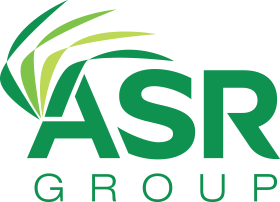USA
800 691 9120
UK
01225 704844
We use cookies on our website to analyze website usage and to help secure the website against misuse. Advertising and functional cookies are not used in our site or our web application products.
By clicking “Accept Essential Cookies Only”, you consent to us placing these cookies.
IT asset management implementations typically rely on external scripts, middleware, or implementation services to integrate with other systems. That approach increases implementation time, operational overhead, and maintenance costs. While this traditional API setup is available to xAssets customers, we also provide an advanced architecture where full API capabilities plus an embedded scripting and execution environment can run inside the product.
This means you don't need to write C# or VB programs to create functionality specific to your needs - the entire functionality can be created inside your xAssets instance, so there's no security concerns with API keys, and no need to provide a platform to host your code.

Transformations are server-side tasks which take data from one place, and send it to another place, with conversions, translations, data cleansing, recognition, lookup refactoring, and other data manipulation as needed.
Transformations provide a scripting language called AMSX. This integrates completely with the xAssets API, and provides many other extended commands to manipulate data. It has the normal language structures like looping and IF statements.
Every capability of xAssets is accessible via the public API (the same API used by the web user interface). AMSX is a VB‑style scripting language embedded in the server subsystem. AMSX scripts execute within the platform and can perform integrations, data transformation, scheduled jobs, notifications, imports and exports.
Key functional areas where AMSX is typically used:
Use the API when external systems must connect directly. The API exposes every product capability; AMSX is recommended when you want contained execution and lower operational overhead. AMSX supports advanced language constructs and can run multiple processes on different threads in parallel
A scheduled AMSX job that imports
// Parameters will automatically construct a dialog box to prompt the user for values
Parameters ApplicationServerCredentials, JiraProject
Set ProjectsExist = SQL"select name from sys.objects Where object_id = OBJECT_ID(N'$TempDB$JIRAProjects') and Type = 'U'"
If %ProjectsExist% = '' Then
RunTransform "JIRA Get Projects"
end if
Set Parameter.JiraProjectName = SQL "select ProjectName from $TempDB$JIRAProjects where ProjectKey = %JiraPRoject%"
// Get the credentials
ReadCredentialPack "%ApplicationServerCredentials%", "domainname", "apiusername2", "apipassword2"
if %domainname% = '' or %domainname% = '.' then
Throw "JIRA integration requires a JIRA credential pack with the domain name set to the URL used to access the JIRA API"
end if
Set AssetFieldName = "%spo:JIRAAssetFieldname%"
if %AssetFieldName% = '' Then
Set AssetFieldName = RunTransform "JIRA Get Asset Field Name"
end if
// encode credentials for the http header
Set Base64 = BASE64 "%apiusername2%:%apipassword2%"
// JIRA uses a basic auth header
HTTPHEADER "Authorization", "Basic %base64%", "string"
Set url = "https://%domainname%/rest/api/3/search?jql=Project='%JIRAProjectName%'"
// get the data from JIRA with a HTTP get
Set json = GET "%url%", "application/json"
// write to a file for debugging purposes
SaveTextFile "%web%\userfiles\JIRAIssuesList.txt"
// declare the mapping for the JSON data to move into a table
// "issues" is the root node and the array underneath it represents each record
TEXT
Project:fields.project.name,
IssueKey:key,
IssueType:fields.issuetype.name,
CreatedDate:fields.created,
Summary:fields.summary,
Description:xmltext:fields.description.content,
Reporter:fields.reporter.displayName,
ReporterEmail:fields.reporter.emailAddress,
Assignee:fields.assignee.displayName,
Status:fields.status.name,
AssetID:fields.AssetFieldName(0).originId,
UpdatedDate:fields.updated,
Url:self
ENDTEXT
Set FieldMap = "%text%"
Set FieldMap = replace "AssetFieldName", "%AssetFieldName%"
// Get the variable directly into the result buffer
GetVariable "json"
// ... and parse the result into an xml document
JSONTOXMLTABLE "issues","%fieldmap%"
// Load the XML into a temp table, then the data load into the data model can run from the caller
XMLTOTEMPTABLE "$tempdb$Jira", "0", "1"
// Now we have our jira data in a sql server temporary table, ready to be mapped with a transformation
RecogniseAndClean "$tempdb$Jira", "Manufacturer", "Model", "SerialNumber"
RunTransform "JIRA Integration - Temp Table to Data Model"
In reality, the transformation and AMSX model works best for almost all scenarios. Despite the power of being able to work with API calls from external programs, it is almost always better to place the functionality inside xAssets Transformations and AMSX scripts:
xAssets combines full API transparency with a contained execution environment (AMSX) to improve security, implementation time and reduce complexity.
Free instances are free forever and can show demo data or your data.































